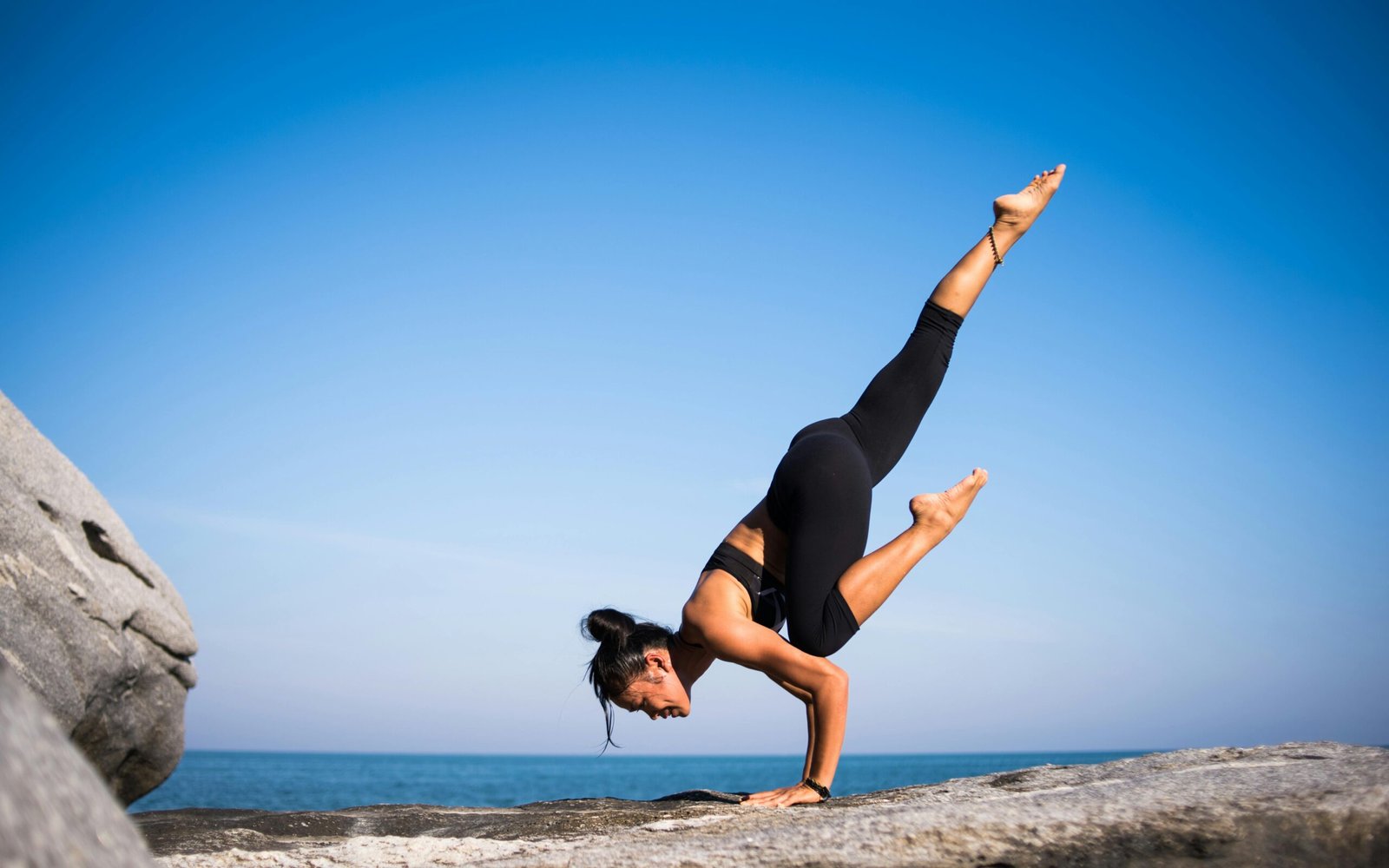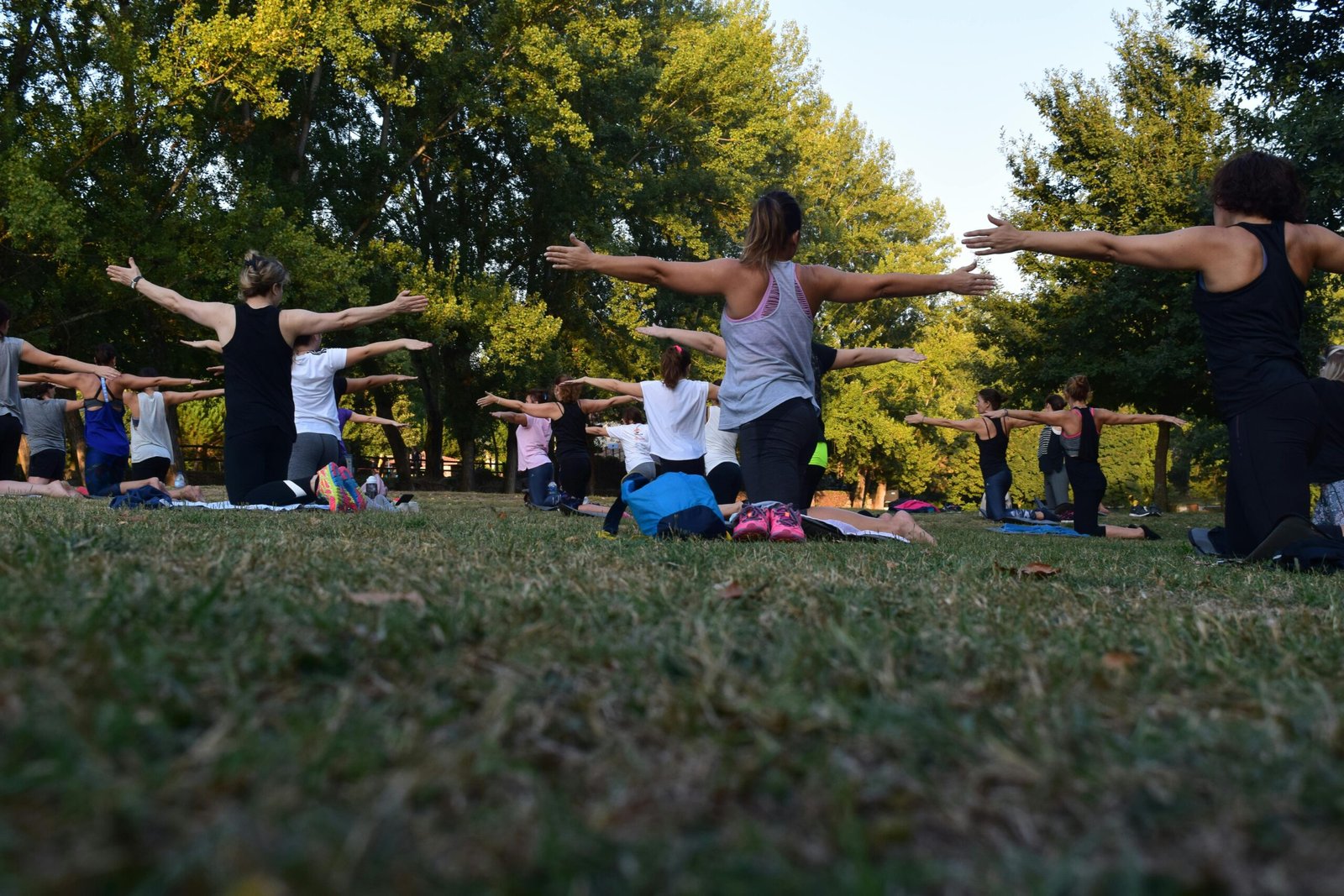Adding yoga to your fitness routine can enhance your overall well-being while allowing you to explore various physical activities. Many people mistakenly believe that yoga needs to be the sole focus of their exercise regimen, but that’s simply not the case. Incorporating yoga can beautifully complement strength training, endurance workouts, and cardio activities while providing essential relaxation and recovery.
This article will highlight the benefits of blending yoga with other physical exercises and dispel common myths surrounding the practice. From lifting weights to engaging in dynamic cardio workouts, you’ll discover how yoga can seamlessly fit into a balanced fitness approach, improving your flexibility and enhancing your performance across multiple disciplines. Embrace the idea that a diverse routine can be both enjoyable and rewarding!
Understanding Yoga
Origins and History of Yoga
Yoga has a rich and ancient history that dates back over 5,000 years to the Indus Valley civilization in India. It is believed that the term “Yoga” is derived from the Sanskrit word “Yuj,” which means to yoke or unite. This union refers to the balance of body, mind, and spirit. The oldest texts depicting yoga practices are found in the Vedas, particularly the Upanishads, which emphasized meditation and ethical living. Over centuries, yoga evolved, encompassing various philosophies and styles, including the influential Yoga Sutras of Patanjali, which outlined the Eight Limbs of Yoga providing a guide for personal development and spiritual growth.
Different Styles of Yoga
Yoga encompasses a variety of styles, each with its own unique approach and benefits. Common styles you might encounter include Hatha, which focuses on basic postures and breath control; Vinyasa, characterized by flowing sequences that connect breath and movement; and Ashtanga, known for its intense, structured routines. Restorative yoga emphasizes relaxation through supported postures, while Power yoga offers a dynamic, fitness-based approach. With so many styles available, you can choose a practice that resonates with you and meets your specific fitness and wellness goals.
Benefits of Practicing Yoga
Practicing yoga offers numerous benefits that can enhance your physical, mental, and emotional well-being. On a physical level, you can improve your strength, flexibility, and balance. Mentally, yoga promotes mindfulness and helps reduce stress, anxiety, and depression. Emotionally, it fosters a sense of inner peace and self-acceptance. Incorporating yoga into your routine can lead to improved overall health and a greater sense of connection with yourself and others. Practicing regularly can even enhance your performance in other activities, making it a valuable addition to your fitness regimen.
The Importance of a Balanced Fitness Routine
What is a Balanced Fitness Routine?
A balanced fitness routine includes a variety of activities that target different aspects of physical health. It typically combines cardiovascular exercise, strength training, flexibility work, and recovery practices. The goal is to create harmony within your body and reduce the risk of injury while promoting overall well-being. This approach not only keeps your workouts interesting but also promotes physical adaptation, allowing you to become a more well-rounded athlete.
Physical, Mental, and Emotional Balance
Achieving balance in your fitness routine means addressing physical, mental, and emotional aspects of your life. Physically, you want to ensure you’re developing strength and flexibility while improving your cardiovascular endurance. Mentally and emotionally, incorporating practices like yoga and mindfulness helps manage stress, improve mood, and foster a greater connection with your body. By merging these elements, you create a more holistic approach to fitness that enhances your quality of life.
Integrating Different Exercise Modalities
To maximize fitness and well-being, consider integrating various exercise modalities into your routine. Strength training, cardiovascular workouts, flexibility exercises, and recovery techniques like yoga or foam rolling can all contribute to a balanced approach. For example, coupling your weightlifting sessions with yoga can improve your flexibility and aid in recovery, while cardio can enhance your endurance and heart health. This varied approach not only helps prevent boredom but also supports your body in multiple ways.

Complementing Strength Training with Yoga
How Yoga Enhances Strength Training
Yoga can significantly enhance your strength training regimen by promoting better alignment, flexibility, and body awareness. Many yoga poses target the muscles you use during lifting, improving their functionality and performance. Furthermore, the focus on breath work in yoga can help you develop better control during intense lifts, ultimately boosting your strength gains.
Using Yoga for Recovery
Including yoga in your post-workout routine can aid significantly in your recovery process. Gentle stretches restore length to muscles that may be tight after lifting sessions, reducing soreness and enhancing overall flexibility. You might find yourself feeling more rejuvenated after yoga practice as it encourages relaxation and mindfulness, allowing you to recharge both physically and mentally.
Building Flexibility to Prevent Injuries
One of the key benefits of incorporating yoga into your routine is the enhanced flexibility it promotes, which is crucial in preventing injuries. Many strength training exercises can lead to tight muscles if not countered with stretching practices. Yoga increases muscle elasticity and joint mobility, equipping you to lift heavier weights with better form and less risk of injuries.
Improving Flexibility with Yoga
Understanding Flexibility and Its Importance
Flexibility refers to the ability of your joints and muscles to move freely through their full range of motion. It plays a vital role in overall fitness and athletic performance. Enhancing flexibility not only improves your capacity for physical activity but also helps reduce muscle tension, decrease the likelihood of injuries, and promote better posture and alignment.
Key Yoga Poses for Flexibility
Several yoga poses can help you enhance your flexibility. Some favorites include Downward-Facing Dog, which elongates the spine and stretches the hamstrings; Pigeon Pose, great for opening the hips; and Butterfly Pose, which strengthens the inner thighs and groin. Incorporating these poses into your routine, either on their own or as part of a dedicated flexibility session, can yield fantastic results.
Integrating Flexibility Work into Strength Routines
To really reap the benefits of flexibility training, consider integrating specific yoga poses into your strength training routines. A great approach is to start or finish your weightlifting sessions with a short yoga flow, focusing on poses that target muscles you’ve worked. This not only helps prevent tightness but also cultivates a mindful connection to your body during your overall fitness journey.

Incorporating Cardio into Your Fitness Plan
Benefits of Cardio Exercise
Cardiovascular exercise is essential for maintaining a healthy heart, improving lung capacity, and boosting overall stamina. Regular cardio can help with weight management, reduce the risk of chronic diseases, and enhance your mood. Whether you enjoy brisk walking, running, cycling, or group classes, incorporating cardio into your fitness plan can provide numerous health benefits that complement other forms of exercise.
Types of Cardio You Can Use
When it comes to cardio, you have many options to choose from. High-Intensity Interval Training (HIIT) is popular for its efficiency and effectiveness in burning fat. Steady-state cardio, like long-distance running or swimming, offers endurance building and stress relief. Group classes such as spinning or kickboxing can also provide a fun workout while keeping you motivated. You can customize your cardio regimen to fit your interests and fitness goals.
Balancing Cardio and Yoga
To create a balanced fitness plan, it’s essential to find the right balance of cardio and yoga. While cardio will enhance your cardiovascular health and build endurance, yoga can help with recovery and flexibility. You might find it beneficial to set aside certain days for focused cardio workouts while incorporating a restorative yoga session afterward. This balance ensures that you’re nourishing your body and supporting all aspects of your health.
Mindfulness and Meditation in Yoga
The Role of Mindfulness in Fitness
Mindfulness is the practice of being present and fully engaged with the current moment. Incorporating mindfulness into your fitness routine can transform how you view your workouts, making them a more enjoyable experience. By focusing on your breath and body sensations during exercise, you can enhance your performance and connection to the present, reducing distractions and increasing motivation.
How Meditation Can Improve Your Performance
Meditation can provide significant benefits to your performance, leading to improvements in focus, patience, and resilience. Taking time to meditate regularly can help clear your mind, improve your mental clarity, and foster a sense of calm that can translate into your workouts. By enhancing your ability to concentrate, you might find that your fitness level improves as your workouts become more purposeful and effective.
Practicing Mindfulness During Your Workouts
You can easily practice mindfulness during your workouts, whether you’re lifting weights, doing cardio, or practicing yoga. Pay attention to your breath, focus on the movements you are executing, and notice how your body feels throughout. This attention to detail can enhance the quality of your workouts and allow for deeper connections with yourself and your physical capabilities.

Yoga for Stress Relief
Understanding Stress and Its Effects on the Body
Stress is a natural part of life, but when it becomes chronic, it can lead to serious health issues. Physically, stress can cause muscle tension, headaches, fatigue, and even gastrointestinal problems. By understanding how stress affects your body, you can identify effective ways to manage it, and yoga is one of the most effective tools available.
Yoga Techniques for Reducing Stress
Yoga incorporates various techniques specifically designed to reduce stress. Deep breathing, meditation, and mindful movement can calm the nervous system and release tension in the body. Gentle practices, such as restorative yoga, focus on relaxation and help activate the parasympathetic nervous system, promoting a sense of calm and balance. These techniques can help you navigate stressful moments in your life more gracefully.
Creating a Relaxation Routine with Yoga
Establishing a regular relaxation routine that incorporates yoga can be incredibly beneficial for stress management. Set aside a few minutes each day for a gentle yoga practice, focusing on poses that promote relaxation, such as Child’s Pose and Supta Baddha Konasana (Reclining Bound Angle Pose). Pair your practice with deep, conscious breathing to cultivate tranquility and mitigate stress in your daily life.
Creating Your Yoga Schedule
How Often Should You Practice Yoga?
The frequency with which you practice yoga depends on your personal goals and lifestyle. Many practitioners find that practicing three to four times a week is optimal for reaping the benefits while maintaining balance with other activities. However, even short sessions of 15-30 minutes can be beneficial if done consistently. Ultimately, the key is to listen to your body and find a routine that works for you.
Finding the Right Time for You
Choose a time that fits into your schedule and allows you to practice consistently. Some people prefer morning sessions to start the day with energy and clarity, while others may find yoga more beneficial as an evening wind-down routine. Explore different times of the day and observe how your body feels and how it affects your overall mood.
Combining Yoga with Other Workouts
Integrating yoga with other parts of your fitness routine is a great way to ensure you’re gaining the benefits of both systems. You might use yoga as a warm-up before strength training or as a cool down afterward. Alternatively, you could schedule a yoga session on days when you do less intense workouts or focus purely on recovery. The beauty of yoga lies in its versatility, making it the perfect complement to a balanced fitness routine.

Choosing the Right Yoga Class or Program
Types of Yoga Classes Available
There are numerous yoga classes available, from gentle restorative sessions to vigorous power yoga classes. Many studios also offer specialty classes that focus on specific areas like hot yoga, aerial yoga, or yoga for athletes. Exploring different types can help you identify what resonates with your personal practice and goals.
Online vs. In-Person Yoga
With the advancement of technology, you can now choose between attending classes in person or practicing yoga online. Online classes allow convenience and a diverse range of options, while in-person classes can offer personalized instruction and community support. Depending on your preferences and comfort level, both options have their unique benefits that can enrich your yoga journey.
Finding a Yoga Teacher or Community
Finding a good teacher or a supportive community is essential to your yoga practice. Look for instructors who resonate with you and offer a style of teaching that aligns with your objectives. Building a connection with a community, whether online or in person, enhances your yoga experience and can motivate you to continue your growth and exploration in yoga.
Conclusion
Emphasizing the Holistic Benefits of Yoga
Yoga is not just a physical practice; it’s a holistic approach to health that nurtures the body, mind, and spirit. Its profound benefits include increased flexibility, improved strength, enhanced mindfulness, and stress relief. By incorporating yoga into your routine, you’re choosing a pathway toward a more balanced and fulfilling life.
Encouragement to Explore and Mix Different Activities
Remember, it’s perfectly okay to embrace various physical activities in your fitness regimen. Whether it’s strength training, cardio, or yoga, each offers unique benefits that contribute to a balanced routine. Explore different modalities, and don’t hesitate to mix them up to keep things fresh, engaging, and enjoyable.
Final Thoughts on Achieving Balance in Your Fitness Routine
Achieving balance in your fitness routine is a journey that takes time and experimentation. By understanding the importance of integrating diverse exercises, including yoga, into your life, you’re setting yourself up for a healthier and more well-rounded lifestyle. Embrace the adventure, listen to your body, and enjoy the myriad of benefits each practice brings into your life.



